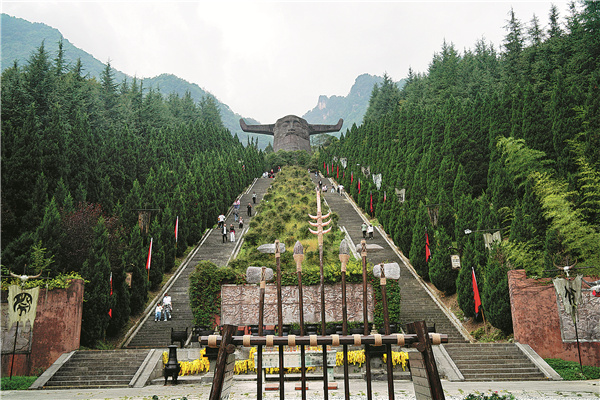

The origin of Chinese
We Chinese proclaim ourselves yan huang zi sun-the offspring of mythical Emperor Yan (Shennong) and Yellow Emperor.
Shennongjia was so named because it's said to be the place where Shennong tasted various herbs to figure out how to use them to cure sickness.
Shennong, who has a human body and ox head, taught different techniques-he invented farm tools and discovered tinder and tea, and he made cooking utensils out of pottery.
In Shennong Altar Scenic Area, a long stone ladder leads to a 21-meter-high stone sculpture of Shennong's head-with two ox horns, he closes his eyes with his chin up, as if he's lost in thought.
Tourists couldn't help gazing in awe at the stone head while they're climbing and looking up. They can also appreciate murals depicting Shennong's legend, with a row of traditional Chinese sacrificial vessels putting aside.
Gaining fame due to the legend of 'wild man'
Shennongjia is a household name in China because it's home of the legendary "wild man". Its folk tale spans the generations.
Similar legends can be found all over the globe, ranging from the Bigfoot in the North America and the Yeti in the Himalayan mountains.
Between 1976 and 1981, the Chinese Academy of Sciences organized three large-scale scientific investigations-anthropologists, zoologists and botanists were sent to the region's thick forest.
Scientists have collected hair, footprints and excrement suspected of belonging to a "wild man", but some experts argue that most were the result of bears, monkeys or even human beings.